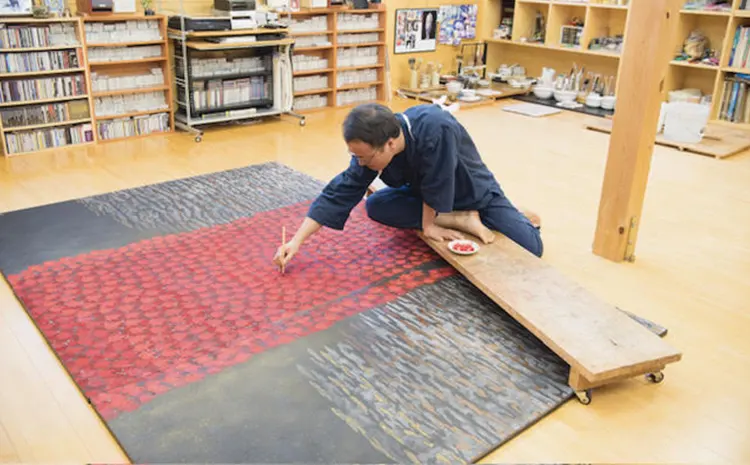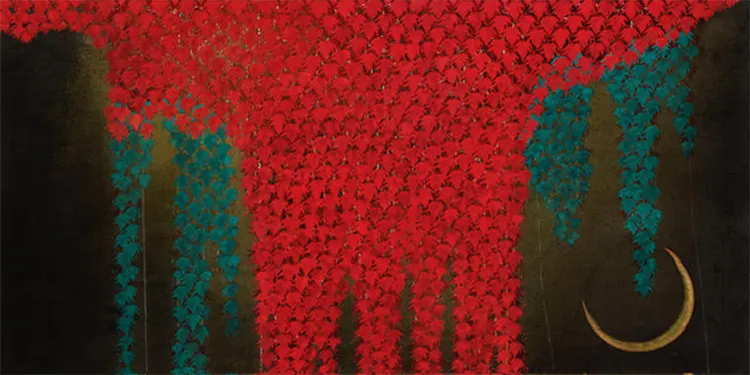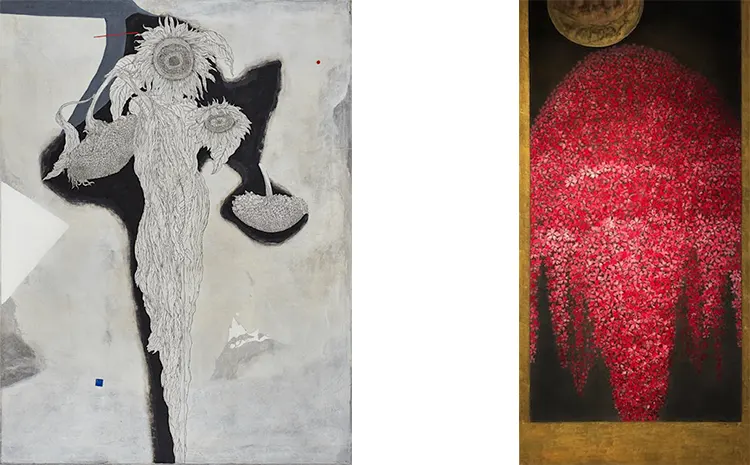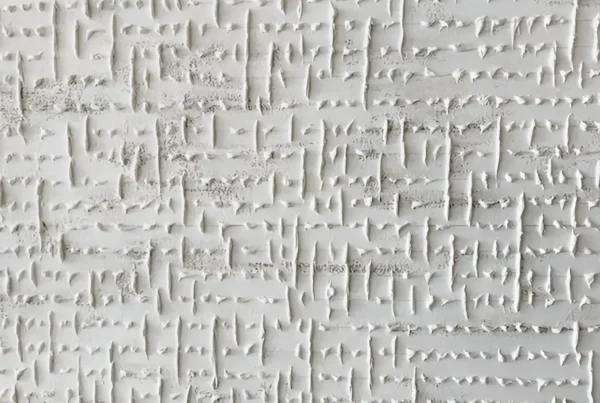The Birth of an Artistic Vision Amidst Nature’s Splendor
Hailing from Ogawara, Miyagi, Japan—a locale renowned for its idyllic vistas of cherry trees gracing riverbanks and the looming presence of Mount Zao in the distance—Hiromitsu Kato was deeply rooted in a domain rich in natural splendor. Surrounded by this bucolic scenery, he felt the seasonal gusts brush over rice terraces and observed waterfowl meandering the river’s edge. The sheer beauty of his environment filled Kato with profound admiration from an early age. Though his familial circumstances were less than ideal, they forged within him an indomitable spirit—a resilience that became a cornerstone of his ensuing artistic endeavors. Predominantly, Kato’s oeuvre centers around motifs of flowers, birds, the wind, and the moon, integral elements of Japanese fine art.
The seeds of Kato’s artistic ambitions were sown during his early years. With dedication, he wielded pencils to capture diverse designs and patterns. A singular dream dominated his thoughts: to fully inhabit the world of an artist. Despite the constraints of a rural background and the lack of immediate access to elite artistic training, Kato’s unwavering determination bore fruit when he secured admission to a prestigious art institute—a feat that took him three years, considering the academy’s rigorous acceptance criteria which allowed a mere 20 students each year. In this institution, Hiromitsu delved deep into the realm of Japanese painting. The intricate techniques of this art form posed challenges, yet he remained steadfast in his conviction. It was, he believed, only through the lens of Japanese painting that he could truly manifest his deepest emotions and sentiments—a realization that struck him at 18 and remained a guiding principle throughout his illustrious career.

Hiromitsu Kato and A Unique Fusion: Western Techniques Meet Eastern Soul
Within the realm of artistry, Hiromitsu Kato’s signature style distinguished him from his contemporaries. He masterfully integrated tempera techniques reminiscent of the Renaissance with quintessentially Japanese elements: Sumi ink, lustrous gold and silver flakes, as well as pigments extracted from seashells, minerals, and gemstones. Kato perceived his artistic endeavor as a celestial calling, imbuing his masterpieces with profound sentiments of gratitude and reverence for the inherent splendor of the world.
While the legendary Michelangelo, celebrated for his technical mastery, unwavering fortitude, and daring vision, left an indelible mark on Kato’s work, another influential figure in his artistic journey was Jakuchu. Jakuchu’s unyielding commitment to his artistic vision, irrespective of societal perceptions, deeply resonated with Kato.

“Time Stream” and Beyond: Echoes of Kato’s Heartbeat
In the extensive repertoire of Hiromitsu Kato, “Time Stream” occupies a singularly cherished position. Conceived in 1993, this seminal artwork signaled Kato’s decisive break from a prominent Japanese painting institution. It stands as a beacon of his steadfast dedication to presenting genuine, message-centric art to an international audience. This dedication found further expression in the 2016 work, “Vision,” a collection of panels adorned with exquisitely hand-painted petals, bearing testimony to both his unparalleled technique and profound emotional resonance. In the wake of the tragic earthquake that struck Japan in March 2011, the allure of cherry blossoms beckoned him, becoming a canvas for his solace and supplication.
The artistic process Kato employed was singular in its approach. In the preliminary stages, he would envelop himself in a rich tapestry of international music, spanning genres from jazz and pop to soul, rock, and country. Yet, when transitioning to the heart of his painting sessions, it was the harmonious strains of classical compositions that sustained his concentration.

Kato’s Medium: A Window to Spirituality and Global Aspirations
In the artistic odyssey of Hiromitsu Kato, the choice of medium resonated with profound spiritual significance. The divine aura exuded by Japanese and tempera painting pigments, rooted in their organic origins, continually captivated him. While Kato imparted knowledge to young proteges, experimenting with diverse mediums, it was the allure of these natural elements that persistently beckoned his soul.
Throughout his distinguished career, Kato harbored an earnest aspiration for his creations to be revered on a global stage. He was of the conviction that his magnum opuses could offer profound glimpses into the intricacies of Japanese culture and philosophy, with the potential to reshape international viewpoints. This sentiment was mirrored by those in his orbit, a reflection of the very essence of his moniker, “Hiromitsu.” Bestowed upon him by a venerating priest, the name symbolized a beacon of light shining out to the world. It remains a fervent collective hope that the legacy of Kato, encapsulated in his evocative artworks, perpetually kindles inspiration and wisdom for global admirers.







One Comment